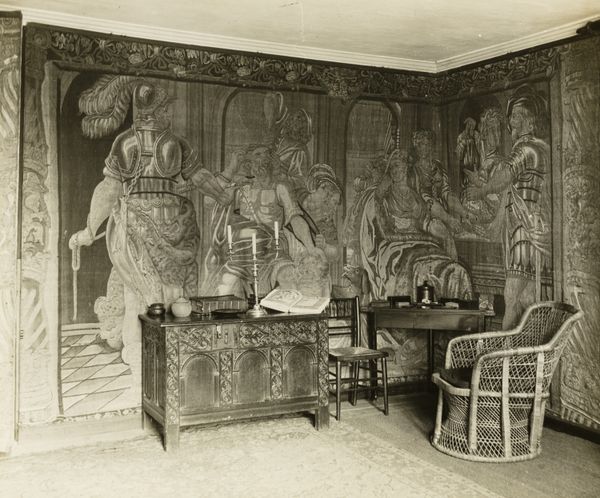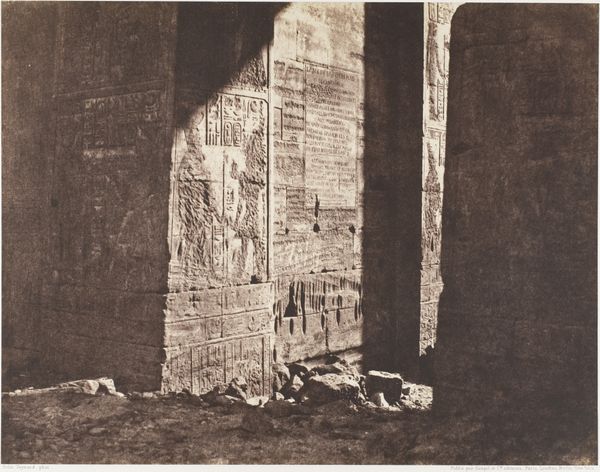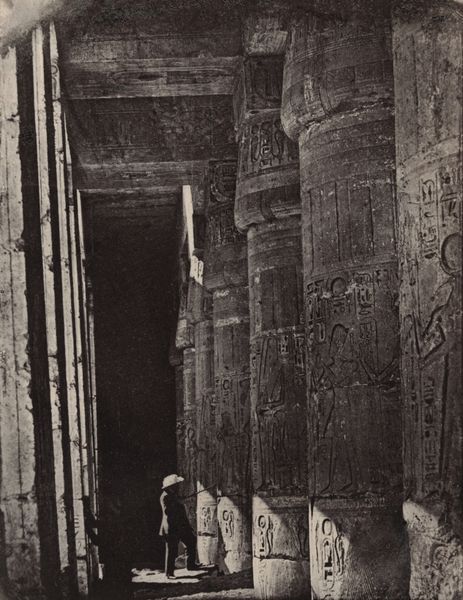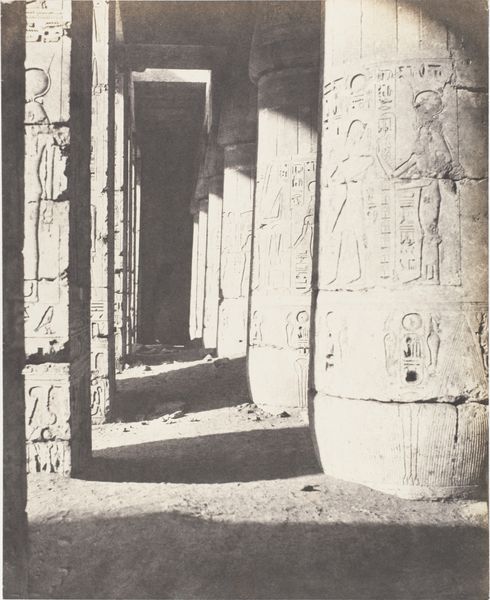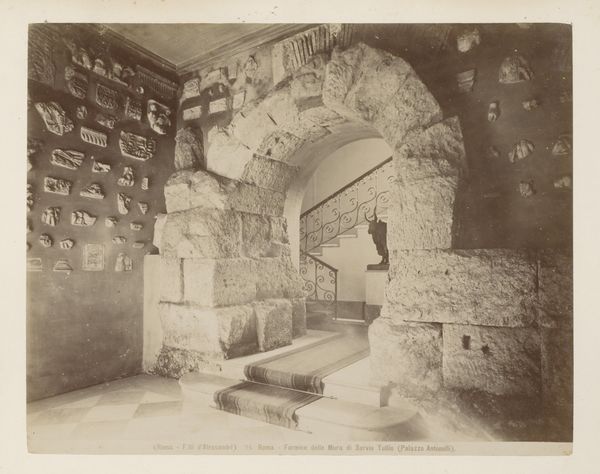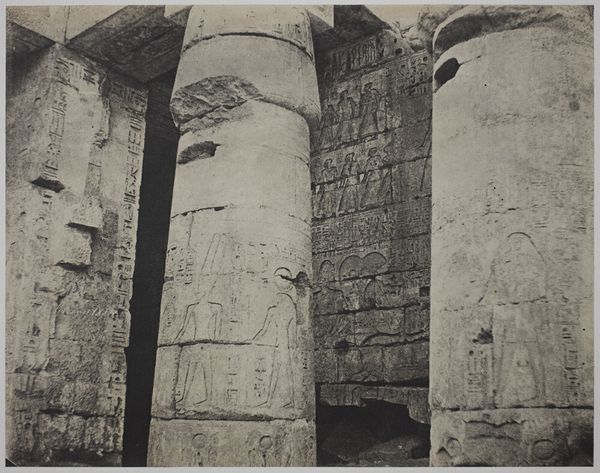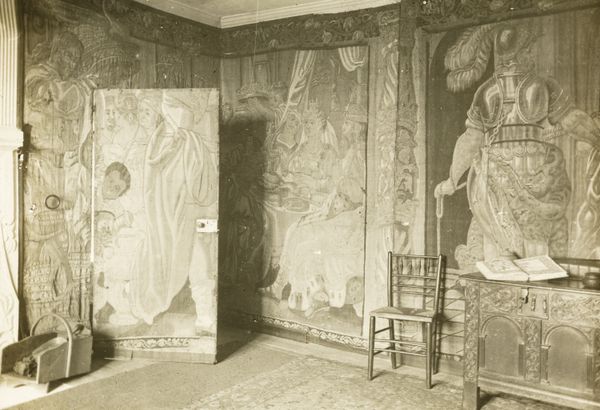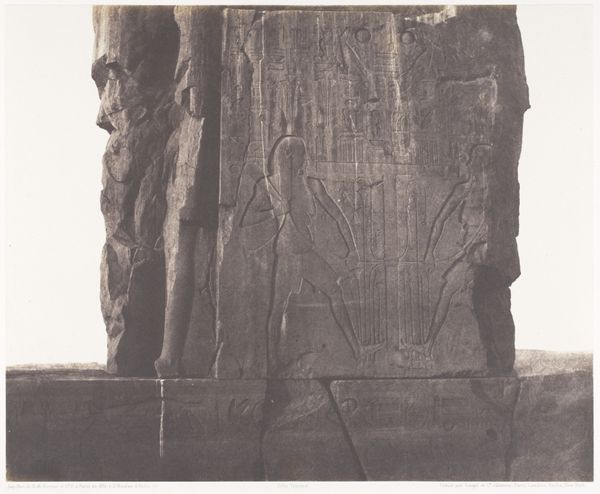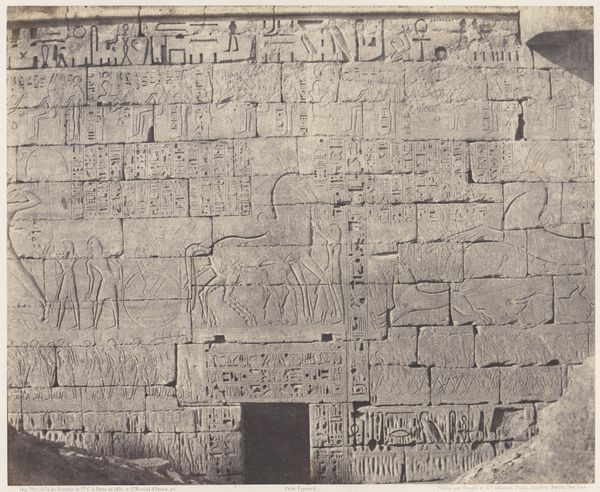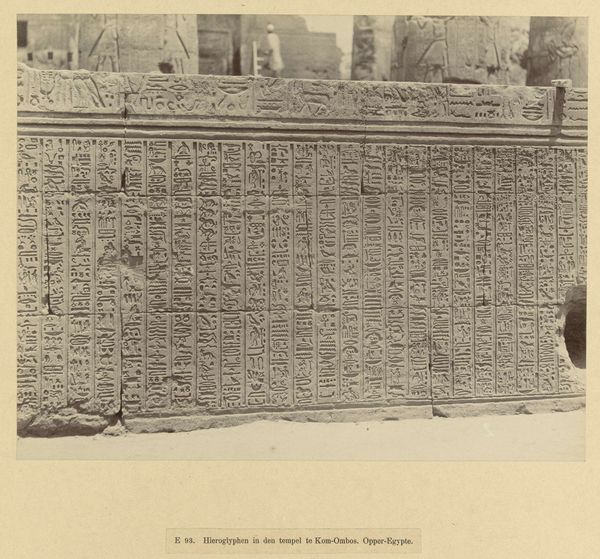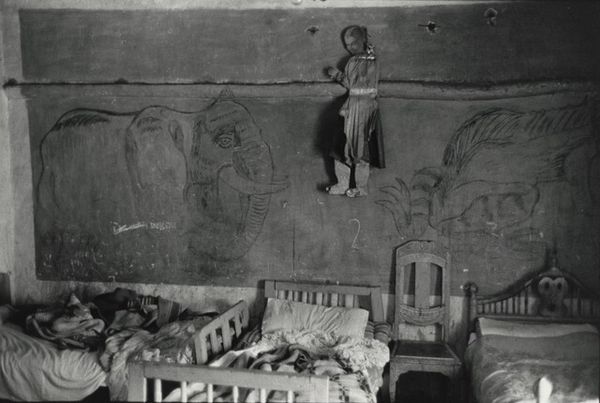
photography
#
pictorialism
#
arts-&-crafts-movement
#
sculpture
#
landscape
#
photography
Dimensions: 8.2 × 8.2 cm
Copyright: Public Domain
Curator: Frederick H. Evans created this evocative photograph, "Kelmscott Manor: Passage to Parallel Room," in 1896. It's now held at the Art Institute of Chicago. Editor: My first thought is quiet intimacy. It feels almost dreamlike, that monochrome palette, soft focus… like a whispered secret. Curator: It’s quintessential Pictorialism, aspiring to the condition of painting, isn't it? Evans manipulates the photographic process, focusing on texture and tone to soften the realism. Look at the composition, how he leads our eye from the shadowed foreground, with the furs and textiles, through the open doorway and into that brightly lit space beyond. It's a clever use of spatial depth, right? Editor: Yes, the open doorway certainly creates an intentional frame, a view into another realm. But also consider all the textures! The heavy tapestry or wall hanging to the right contrasts beautifully with the smooth jug on the lower right. It almost tells a story about warmth, protection, and daily domestic ritual. There is something cozy in it, do you not feel it? Curator: Cozy yes, but also intensely self-aware. Think of the Arts and Crafts movement, William Morris's influence on Kelmscott Manor. Everything is handcrafted, carefully placed to reflect an idealized medieval aesthetic. It is quite beautiful and even idealized, a scene in a dream of the past. Editor: So it's not just a picture of a room, is it? It's a staged tableau. I am seeing that it's the aesthetic statement, celebrating the handmade in contrast to the industrial age. The tapestry hanging, with its lush botanical design, acts as a cultural and visual focal point within the carefully considered design. It even almost has a painterly texture. Curator: Absolutely. It speaks volumes about a particular moment in art history, that tension between photography's inherent realism and the desire to create a subjective artistic vision. It certainly represents the perfect harmony and intentionality between these visual concepts, yes? Editor: A doorway, perhaps, to more than just another room. Curator: It gives us a rare and thought-provoking glimpse into a crafted life.
Comments
No comments
Be the first to comment and join the conversation on the ultimate creative platform.

